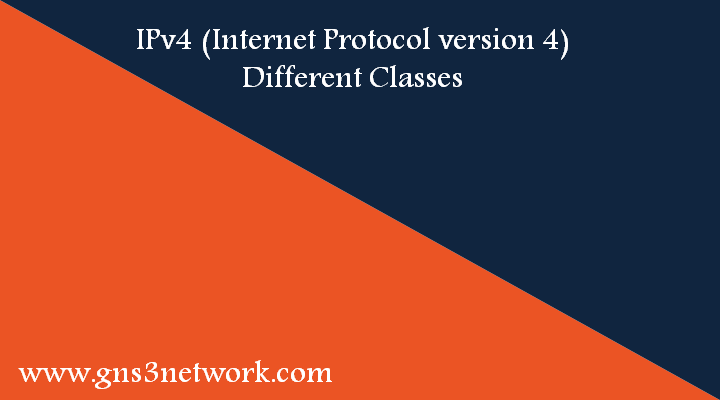IPv4 (Internet Protocol version 4), is the 4th version of Internet Protocol. We have a large number of addresses in IPv4. In this article, we will discuss various classes defined in IPv4.

History of IPv4
At the beginning of the IPv4 design, the complete address was divided into two parts. The first part was known as a Network identifier and the rest of the part was known as a host identifier. But, they were quickly found to be inadequate.
ICANN is responsible for assigning IP Addresses.
In 1981, according to the most significant octet, IPv4 addresses were defined in five different classes. These classes are A, B, C, D, and E.
IPv4 Different Classes
However, in IPv4 we have 4,294,967,296 unique addresses. However, some of these addresses are not used for communication purposes. Also, one complete octet from Classes A, B, and C is used for Private IP addresses. Know more about Public and Private IP addresses. Below is the table which categorizes different addresses in different network classes.
[table id=11 responsive=scroll /]
Now, we will discuss each network class in detail.
Class A
The range of the first octet of class A addresses is from 0 to 127. Thus, in the binary system, the first bit of the first octet is set to zero. So, in the binary system it will be :
00000001 – 01111111
1 – 127
However, the addresses from 0.0.0.0 to 0.255.255.255 are not usable in communication. Also, the addresses from 127.0.0.0 to 127.255.255.255 are reserved for loopback purposes. So, the range of usable IP addresses of class A is from 1.0.0.0 to 126.255.255.255.
The default subnet mask of the Class A network is 255.0.0.0. So, there will be a maximum of 16,777,216 hosts that can be connected in a single network. The total number of different networks will be 126. The Binary representation of Networks and Hosts will be :
0NNNNNNN:HHHHHHHH:HHHHHHHH:HHHHHHHH
Class B
The range of the Class B address is from 128.0.0.0 to 191.255.255.255. So, the first two bits of the first octet are always set to 10. The binary representation of the first octet will be:
10000000 – 10111111
128 – 191
The default subnet mask of the class B address is 255.255.0.0. The Binary representation of Class B Networks and Hosts will be :
10NNNNNN:NNNNNNNN:HHHHHHHH:HHHHHHHH
Class C
The range of Class C addresses is from 192.0.0.0 to 223.255.255.255. So, the first three bits of the first octet are always set to 110. The binary representation of the first octet will be:
11000000 – 11011111
192 – 223
The default subnet mask of the class B address is 255.255.255.0. The Binary representation of Class C Networks and Hosts will be :
110NNNNN:NNNNNNNN:NNNNNNNN:HHHHHHHH
Class D
The range of Class D addresses is from 224.0.0.0 to 239.255.255.255. So, the first four-bit of the first octet is always set to 1110. The binary representation of the first octet will be:
11100000 – 11101111
224 – 239
Note: The IP addresses of IPv4 Class D are used for multicasting purposes only. These IP addresses do not directly participate in computer networking. So, class D does not have any subnet mask.
Class E
Class E is reserved for Research or study purposes. So, this class does not participate in the computer network. Like class D, this class also does not have any subnet mask. The range of addresses of this class starts from 240.0.0.0 to 255.255.255.0.
Summary
In this article, we discussed various classes of IPv4. We also discussed some different addresses of different IP classes and their range. Subnet Mask is used in Classes A, B, and C but not in Classes D and E. We also discuss the binary representation of different network classes.